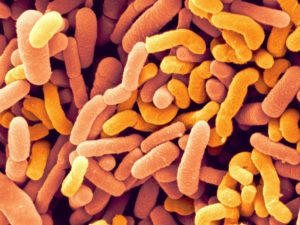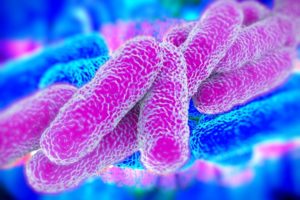Top 10 Most Dangerous Bacteria on Earth
Top 10 Most Dangerous Bacteria on Earth
There is an excellent need to implement the Antimicrobial Stewardship
Bacteria are tiny single-celled organisms
Bacteria is almost everywhere and vital to the planet’s ecosystems
Some species can live under extreme conditions of temp and pressure
- What’s interesting about bacteria is that our bodies have ten times more bacterial cells than human cells.
- Most bacteria in the body are harmless, and some are helpful.
- They help the body healthily maintain itself.
- However, A relatively small number of species cause disease and could be a deadly disease (1)
- Millions of people die each year because of these microscopic living beings. Bacteria multiply in human bodies and exploit any weakness in the system.
Here is the list of the Top 10 Most Dangerous Bacteria on Earth that can prove to be the most lethal of all
10- E. Coli💊
9- Clostridium Botulinum💊
8- Salmonella💊
7- Vibrio cholera💊
6- Tetanus💊
5- Klebsiella💊
4- Staphylococcus💊
3- Syphilis💊
2- Streptococcus💊
1- Tuberculosis💊
10. E. Coli

- Escherichia coli (abbreviated as E. coli) are bacteria in the environment, foods, and intestines of people and animals.
- It is one of the most bad bacteria.
- E. coli are a large and diverse group of bacteria. Although most strains of E. coli are harmless, others can make you sick.
- In addition, some E. coli can cause diarrhoea, while others cause urinary tract infections. In addition to respiratory illness and pneumonia, and other diseases (2)
- The WHO publishes the list of bacteria for which new antibiotics are urgently needed.
- They listed E.coli in the most critical group of all, including multidrug-resistant bacteria that pose a particular threat in hospitals, nursing homes, and among patients whose care requires devices such as ventilators and blood catheters (3).
9. Clostridium Botulinum
- This microbe was first described in 1897 by E. van Ermengem after investigating a foodborne outbreak in Ellezelles.
- It is one of the most Dangerous Bacteria on Earth
- Belgium botulinum is a group of culturally distinct organisms that are alike only because they are clostridia and produce antigenically different neurotoxins with a similar pharmacologic action.
- There are seven types of C. botulinum (A-G), distinguished by the antigenic characteristics of neurotoxins they produce (5).
- Food-borne botulism is rare but may kill rapidly, and contaminated products may expose many people.
- The Food-borne botulism. Therefore, represents a medical and a public health emergency.
- Prompt diagnosis and early treatment of botulism are essential to minimise the otherwise significant risk of death (6).
8. Salmonella
- Salmonella was discovered by an American scientist named Dr Salmon, who knew the cause of illness for over 125 years. The condition is known as salmonellosis (7).
- It is one of the most Dangerous Bacteria on Earth
- Most people infected with Salmonella develop diarrhoea, fever, and abdominal cramps between 12 and 72 hours after infection.
- The illness usually lasts 4 to 7 days, and most individuals recover without treatment. In these patients, the Salmonella infection spread from the intestines to the bloodstream and other body sites.
- Moreover, Salmonella causes death unless a person is treated promptly with antibiotics.
- The elderly, infants and those with impaired immune systems are more likely to have a severe illness. Salmonella infections are more common in the summer than in winter(7).
7. Vibrio cholera
- This is the bacteria responsible for the well-known disease Cholera.
- There are many serogroups of V. Cholerae, but only two – O1 and O139 – cause outbreaks.
- However, no difference in the illness caused by the two serogroups.
- Cholera, according to WHO, is a highly virulent disease that can cause severe acute watery diarrhoea.
- It takes between 12 hours and five days for a person to show symptoms after ingesting contaminated food or water with the bacterium Vibrio cholera.
- Cholera affects children and adults and can kill within hours if untreated.
- Most people infected with V. cholerae do not develop any symptoms. However, the bacteria are present in their faeces for 1-10 days after infection and are shed back into the environment, potentially infecting other people.
- Among people who develop symptoms, the majority have mild or moderate symptoms, while a minority develop acute watery diarrhoea with severe dehydration.
- This can lead to death if left untreated. Researchers have estimated that every year, there are roughly 1.3 to 4.0 million cases and 21 000 to 143 000 deaths worldwide due to cholera (8)
6. Tetanus
- According to CDC, Tetanus is an infection caused by a bacterium called Clostridium tetani.
- It is Dangerous Bacteria on Earth
- Spores of tetanus bacteria are everywhere in the environment, including soil, dust, and manure.
- The spores can get into the body through broken skin and develop into bacteria when they enter the body. (9).
- Then, Neurotoxins produced under anaerobic conditions in wounds.
- Tetanus, according to WHO, occurs during pregnancy or within six weeks of the end of pregnancy.
- Tetanus called “maternal tetanus”, while tetanus occurring within the first 28 days of life is called “neonatal tetanus”(10).
- The Tetanus called “lockjaw” because one of the most common signs of this infection is tightening jaw muscles.
- The signs also include Painful muscle stiffness all over the body and Jerking or staring (seizures).
- Furthermore, Tetanus infection can lead to serious health problems, including difficulty opening the mouth and difficulty swallowing and breathing.
5. Klebsiella
- The Klebsiella is a genus of nonmotile, Gram-negative, oxidase-negative, rod-shaped bacteria. Klebsiella is named after German-Swiss microbiologist Edwin Klebs(11).
- It is Dangerous Bacteria on Earth
- Klebsiella species are routinely found in the human nose, mouth, and gastrointestinal tract as normal flora.
- However, they can also behave as opportunistic human pathogens.
- It can lead to various disease states, notably pneumonia, urinary tract infections, septicemia, meningitis, diarrhoea, and soft tissue infections.
- This is illustrated in one of the most amazing books, Current Diagnosis & Treatment in Infectious Diseases 1st Edition (12). Resistance to Klebsiella pneumonia – common intestinal bacteria that can cause life-threatening infections – to the last resort treatment (carbapenem antibiotics) has spread to all regions of the world as a Dangerous Bacteria on Earth
- K. pneumonia is a significant cause of hospital-acquired infections such as pneumonia, bloodstream infections, and infections in newborns and intensive-care unit patients.
- In some countries, carbapenem antibiotics do not work in more than half of people treated for K. pneumoniae infections because of resistance.
4. Staphylococcus
- Staphylococcus (from the Greek: “grape” and “granule”) is a genus of Gram-positive bacteria, one of the most Dangerous Bacteria on Earth.
- The Staphylococcus genus includes at least 40 species.
- Most are harmless and usually reside on the skin and mucous membranes of humans and other organisms.
- Found worldwide, they are a small component of soil microbial flora. (14)Many antibiotic-resistant strains were observed.
- In addition, one of them is methicillin-resistant Staphylococcus aureus (MRSA). MRSA is responsible for several difficult-to-treat infections in humans.
- Additionally, MRSA is any strain of S. aureus that has developed. This occurs through horizontal gene transfer, natural selection, and multiple drug resistance to beta-lactam antibiotics.
- MRSA is common in hospitals, prisons, and nursing homes. People with open wounds, invasive devices such as catheters, and weakened immune systems are at greater risk of hospital-acquired infection(15).
- People with MRSA estimated to be 64% more likely to die than those with a non-resistant infection. (13)
3. Syphilis
- Syphilis is a sexually transmitted disease caused by the bacterium Treponema pallidum.
- Which can infect almost any part of the body depending on the stage of the illness; acquired syphilis is classified into early (primary, secondary, and early latent) syphilis and late (or tertiary) syphilis.
- The signs and symptoms of syphilis vary depending on which of the four stages it presents (primary, secondary, latent, and tertiary).
- Moreover, the primary stage classically presents with a single chancre (a firm, painless, non-itchy skin ulceration).
- There may be multiple sores. In secondary syphilis, a diffuse rash occurs, which frequently involves the palms of the hands and soles of the feet.
- There may also be sores in the mouth or vagina. In latent syphilis, which can last for years, there are few or no symptoms of tertiary syphilis. There are gummas (soft non-cancerous growths) and neurological or heart symptoms.
- Syphilis spread through sexual activity. It may also be transmitted from mother to baby during pregnancy or birth, resulting in congenital syphilis. (16)
2. Streptococcus
- Streptococcus is a genus of coccus (spherical) Gram-positive bacteria, it is one the Most Dangerous Bacteria. (17)
- It is one of the bad bacterias. It is the deadliest bacteria
- Many streptococcal species are not pathogenic and form part of the commensal human microbiota of the mouth, skin, intestine, and upper respiratory tract.
- However, certain Streptococcus species are responsible for many cases of pink eye, meningitis, bacterial pneumonia, endocarditis, erysipelas, and necrotising fasciitis (the ‘flesh-eating’ bacterial infections).
- In addition to streptococcal pharyngitis (strep throat). (18)
1. Tuberculosis
- Tuberculosis (TB) is one of the Dangerous Bacteria on Earth. WHO classifies it as an infectious disease among the top 10 causes of death.
- It is one of Most Dangerous Bacteria. It is most harmful bacteria
- Additionally, it is due to the bacterium Mycobacterium tuberculosis (MTB). Tuberculosis generally affects the lungs.
- In addition to affecting other parts of the body.
- Most infections do not have symptoms, such as latent tuberculosis. About 10% of latent infections progress to active disease, which, if left untreated, kills about half of those infected.
- The classic symptoms of active TB are a chronic cough with blood-containing sputum, fever, night sweats, and weight loss.
- Finally, tuberculosis spreads through the air when people with active TB cough, spit, speak, or sneeze. Multidrug-resistant TB (MDR-TB) remains a public health crisis and a health security threat. (19)
Conclusion
- The pharmacist’s role in decreasing antimicrobial resistance is essential, especially with the Dangerous Bacteria on Earth.
- In addition, every pharmacist needs to be a stewardship professional; pharmacists need to know what is the most dangerous bacteria.
- It is about microbiology, pharmacology, and all infectious disease state antimicrobial stewardship guidelines; all of this can be achieved in FADIC Antimicrobial Stewardship Goals Workshop.
- The Stewardship implementation in healthcare organisations is essential.
- Finally, pharmacists are the co-leader in antimicrobial stewardship intervention and measuring the outcomes.
- All this can be illustrated in FADIC Antimicrobial Stewardship Training Program.
Antimicrobial Stewardship Pharmacists Professional is essential in all healthcare organisations, hospital pharmacists, community pharmacists, retail pharmacists, and clinical pharmacists.
Finally, decrease the resistance and maintain the rational use of antimicrobials.
Read More
- Learn more about Antimicrobial Stewardship Program in Acute-care Settings
- Quick Guide for Antimicrobial Stewardship Program
- Download Infectious Disease Pharmacotherapy E-Book
- Join FADIC Clinical Microbiology Mini-course and MDRs
- Subscribe FREE to Antimicrobial Resistance FNN Daily E-News

 Log in
Log in Sign up
Sign up








